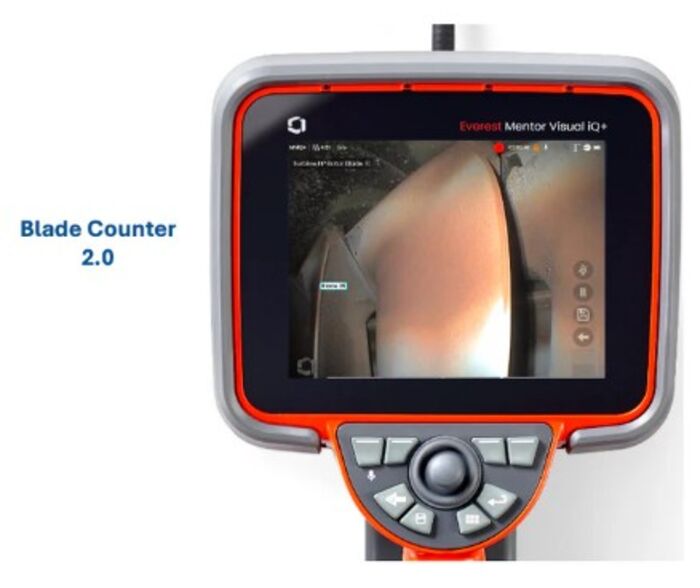Machines are performing more and more tasks and getting faster and smarter. One of the tools riding this wave of innovation is the borescope camera. Known for being used to see into voids, it has been a staple in many industries for years.
Mechanics use it to inspect engines. Engineers use it to look inside pipes. Technicians use it to look inside walls, tanks, and machinery without opening anything up. It’s small, powerful, and very convenient.
Now, a tremendous change is on the way. With the advent of artificial intelligence or AI, borescope cameras are no longer just viewing devices – they’re learning, thinking, and even making decisions. They no longer capture images. They analyze what they’re seeing.
This article explores how AI is changing borescope camera operations.
1. Spotting Problems Instantly
In the past, using inspection tools meant hours of watching footage, not missing a crack or sign of wear. Every frame needed to be scanned by a human eye. It was laborious and time-consuming, and mistakes could be overlooked. Current inspections are faster and far more accurate thanks to AI technology changing your work.
With AI emerging, the borescope camera extends beyond observation. With onboard intelligence, it examines all surfaces as it makes its way through constricted or inaccessible spaces. Without constant human monitoring, it detects real-time cracks, rust, loose parts, or obstructions.
How do they do it? It is by learning. These cameras have learned from thousands of past inspection videos and images. They understand what a pristine, spotless surface looks like. When something’s amiss–even by a little bit–they know it. The system flags the problem, tags the location, and verifies it.
2. Speeds Up Reporting
Once inspected, the actual work starts, such as compiling the report. It involves trawling through hours of video, selecting and detailing every fault. It’s tedious, repetitive, and so easy to overlook crucial points. But artificial intelligence is transforming that, accelerating and streamlining the entire process.
When you use a sophisticated borescope camera, you document as you move. The camera does not just shoot—it thinks. As you move through a room, it automatically takes photos, documents the location of issues, and even measures their dimensions. It is all tidily compiled for you; you never have to revisit, and you can do it all yourself.
As the AI takes care of the documentation, the reports are faster to construct and accurate. They include great images, timestamps, and accurate data so everyone can quickly determine what needs attention. That saves time for the techs, keeps the projects on schedule, and prevents something from getting missed. With AI-driven borescope cameras, inspections don’t end with the video—they end with a complete, ready-to-report solution.
3. Preventing Breakdowns Early
No more waiting for equipment to break before you fix it. You can stay ahead of the problem thanks to AI and smarter tools. This is predictive maintenance, identifying warning signs before anything breaks.
This is possible with an AI-based high-tech borescope camera. It doesn’t just see what’s wrong today. It learns from past inspections and detects patterns that will become problems. A small crack, for instance, might not seem critical at first. But if it’s getting bigger, the system will detect that. Same with parts wearing out or starting to fail.
With these warning signs caught early, teams can schedule repairs when it’s most convenient, and there will be no more surprise repairs or unplanned shutdowns. Work keeps flowing, costs are low, and safety improves. With AI behind every inspection, the borescope camera becomes a powerful tool for staying ahead of the game.
4. Guiding Users with Smart Support
Operating a borescope camera is not always easy. Deciding where to point it, how to move it around, and what to look for is not straightforward. But with AI, it’s getting much easier for beginners as well.
Now, intelligent borescope systems can guide the user along the way. The camera whispers hints, pointing out what to look at or suggesting a second glance when something looks off. These helpful hints make it easier to remain on the right track and spot the key things.
This also means that inspections do not necessarily depend on an expert being present. A technician can operate the camera while specialists review the findings remotely. Staff can sit elsewhere and not miss a thing.
Due to AI, the borescope camera is no longer just a specialist’s tool – it’s also an assistant that helps everyone work faster and more confidently.
5. Clearer Views with 3D Imaging
Small spaces are hard to survey. It’s hard to measure depth or determine the extent of damage from a 2D image. That’s where 3D technology comes in.
High-end borescope cameras with AI can create 3D images of the areas they inspect. The camera captures pictures at multiple angles while it travels. AI puts them together to form a complete shape of the inner space. It offers a much clearer sighting of cracks, holes, or anything else that shouldn’t be there.
Instead of having to guess, inspectors can now actually see the size and pinpoint the problem. It’s like being within the machine without tearing it down. With this clarity, making precise repairs, avoiding wasteful labor, and having everything up and running again is a piece of cake.
Wrapping Up
Borescope cameras have been used for years to inspect out-of-reach areas. But with AI embedded in them, they do so much more. The advanced tools identify issues fast, generate reports automatically, guide you through inspections, and create 3D images.
Today, borescope cameras are not merely observation devices but inspection systems. They bring speed, accuracy, and convenience to complex tasks for industries.


